There is an opinion that toenail fungus is a purely cosmetic problem and cannot harm human health. This posture is extremely incorrect, because toxins produced by pathogenic fungi will enter the bloodstream, poisoning the body, which can lead to extremely serious consequences. In addition, sick people are also a source of infection and can infect a large number of other people.
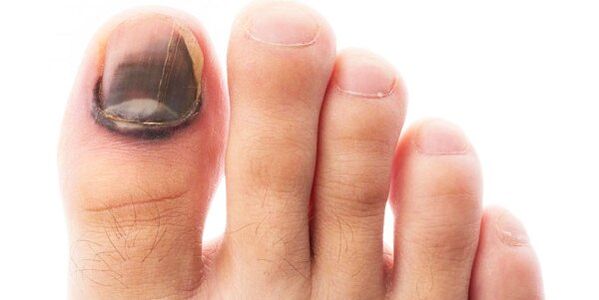
The reason for appearing
Onychomycosis - a fungal infection of the nails or feet - is often detected in people who lead an active lifestyle: going to the pool, gym, spa, vacationing at seaside resorts.
When penetrating the skin and nails of a person with strong immunity, the spores of the fungus will remain in a latent state for a while. The transition to their development and reproduction can occur under the influence of the following factors:
- weakening of the body's defenses due to viral diseases,
- diabetes, hypothyroidism and other endocrine diseases,
- stress, nervousness and excitement,
- varicose veins of the lower extremities, which disrupts normal blood circulation,
- bruises, abrasions, cracks and other injuries of the feet and nails,
- stay in closed shoes for a long time, leading to increased sweating,
- wear tights or synthetic socks,
- metabolic disorders, obesity,
- non-compliance with the rules of personal hygiene.

The risk group includes people with chronic diseases of internal organs - kidneys, liver, biliary tract, as well as patients taking long-term antibiotics, hormonal drugs, including oral contraceptives. .
Types of nail fungus
There are more than 500 types of opportunistic fungi that can parasitize human skin and nails.
The most common causes of toenail fungus are:
- Dermatophytes. These include fungi such as Trichophyton, Microsporum, and Epidermophyton. The disease begins on the nail plates, and if left untreated, it spreads to the entire foot.
- Candida yeast. In most cases, the infection occurs in places with high humidity - saunas, baths or swimming pools.
- Mold, the main sign of that failure is a change in the color of the nail - from dirty green to brown and black.
First, the fungus affects the thumb nail, then moves on to the rest, at least on the little finger. All types of nail fungus are accompanied by intense itching in the nail bed, burning and unpleasant odor due to the decomposition of fungal waste products.
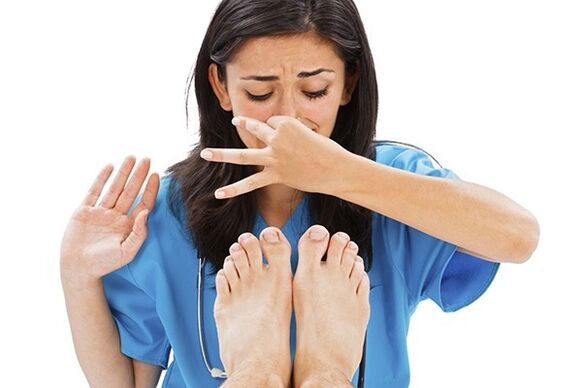
Stages of the disease
Any fungus requires drug treatment. Before making an appointment, the doctor must understand what stage the disease is in and determine the extent of damage to the nail plate.
Depending on the clinical picture, the following stages of onychomycosis are distinguished:
- Normotrophic - the initial stage of the disease, in which the nails gradually change color, spots and stripes appear on them. Nails retain their normal shape, thickness and shine.
- Hypertrophy. Nails thicken, dull and break easily, cracking along the edges. The patient has pain when wearing tight shoes.
- Atrophied. As the name suggests, the nail quickly breaks down, bends, and separates from the nail bed. The plaque becomes very thin and brown spots appear under it - the foci of entry of the pathogen. In the end, the nail was completely torn.
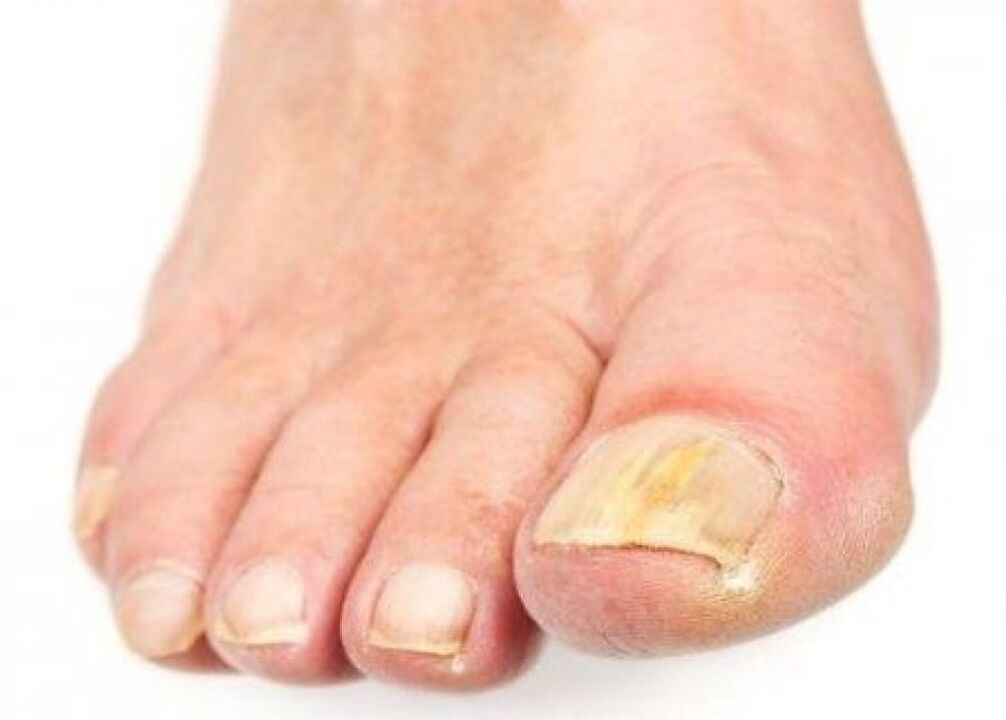
The more severe the disease is, the longer it is and the harder it is to cure. If at the initial stage of toenail fungus can be cured by traditional medicine methods, in the final stage, people often have to resort to surgical methods, even cutting off the damaged nail.
Symptom
In order to start treatment in time, it is necessary to understand how nail fungus manifests itself at each stage.
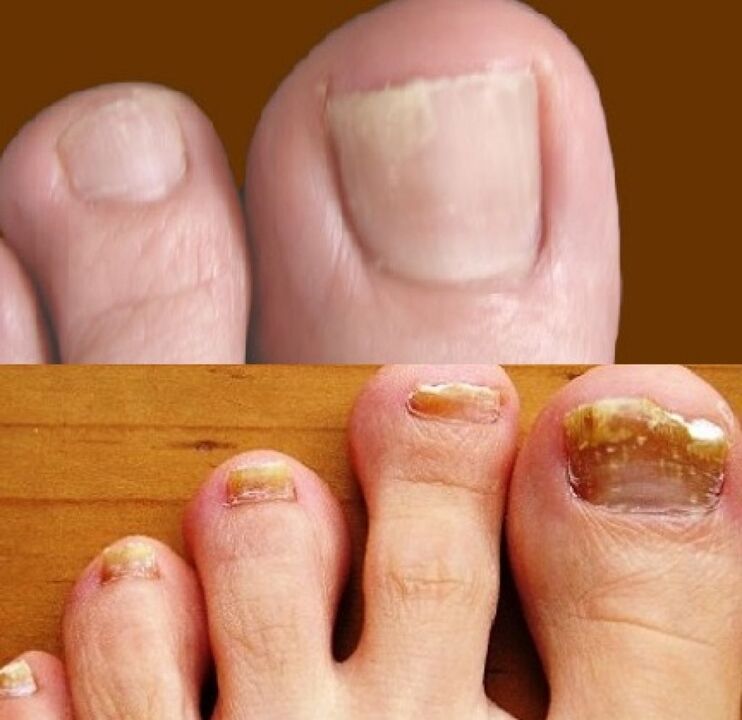
In the early stages, the main sign of toenail fungus is redness of the skin between the nails, accompanied by peeling and mild itching. Then the symptoms of a fungal infection develop in the following sequence:
- nail folds turn red, swell and become painful,
- nails begin to change color from dirty yellow to black, depending on the type of pathogen,
- spots, grooves, nodules and stripes appear on the surface of the sheet,
- nails thicken and peel,
- a white mass that accumulates in the space under the crust, producing an unpleasant odor,
- the keratinized nail plate begins to crumble along the edges,
- nail completely peeled off the bed and rejected.
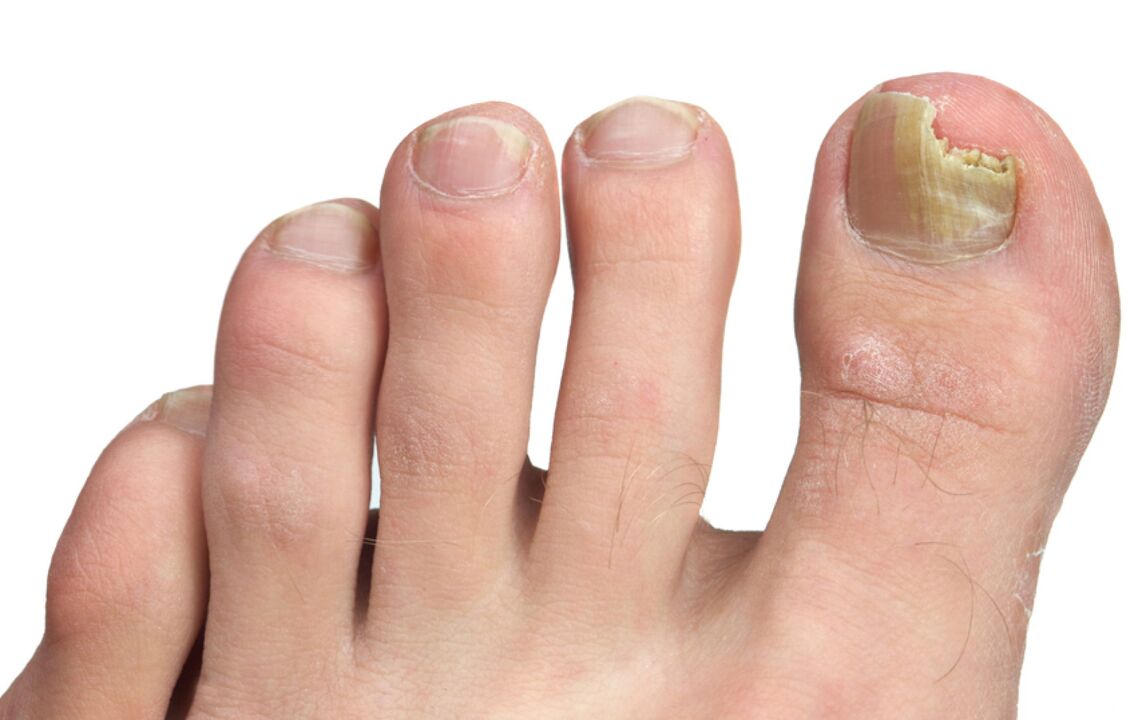
Toenail fungus feet can look extremely uncomfortable to others, so patients are forced to hide them, which is especially difficult in the warm season. In addition, jogging nail fungus also causes complications.
What is dangerous disease?
The fact that many patients are afraid to go to the doctor in the early stages or cannot recognize the first symptoms of nail fungus leads to the disease turning into a chronic form that can lead to lifelong disease. At the same time, with normal immunity, the fungus "freezes" to a certain extent, and any of the above-mentioned provoking factors can again turn the disease into an active stage.
The following types are in the risk group for complications from fungal nail infections:
- Children under 12 years old,
- pregnant,
- women during lactation,
- old generation people.
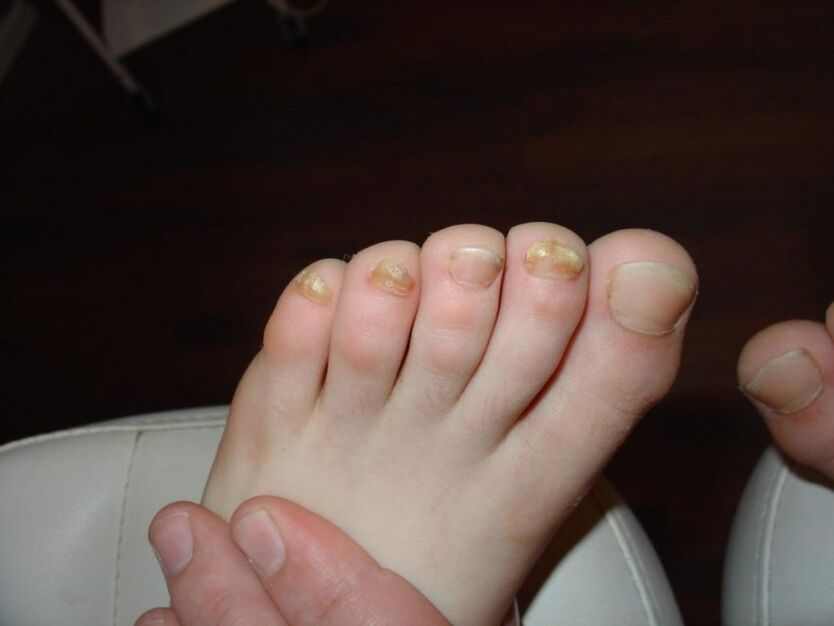
Against the background of a decrease in the body's defenses in these people, the disease spreads rapidly, leading to a further weakening of immunity and such possible consequences:
- allergic reactions to bronchial asthma,
- exacerbation of the course of chronic diseases of internal organs,
- intoxication of the body due to the entry of toxins into the bloodstream,
- dysbacteriosis,
- the appearance of new foci of inflammation on the skin,
- nervous system disorders, psychological problems.
Nail fungus refers to infectious diseases, so not only the sick themselves but all their personal items are a frequent source of infection for others. In the case of toenail fungus detected in women during pregnancy, there is a threat that the fetus will be born with a predisposition to allergies.
Diagnose
Fungal diseases of the skin and nails are treated by a dermatologist or mycologist. For advice, you can contact the dermatology clinic or clinic where these specialists are receiving.
After interviewing the patient, the doctor will be able to draw a picture of the occurrence and development of the disease. The following measures will help make an accurate diagnosis and prescribe the most effective treatment:
- visual inspection of affected nails with Wood's ultraviolet lamp,
- take pieces of skin and fingernails to examine,
- General blood and urine tests.
The biomaterial obtained after the scraping process will be sent to a laboratory, where it is studied under a microscope, helping to determine the nature of the pathogenic fungus.
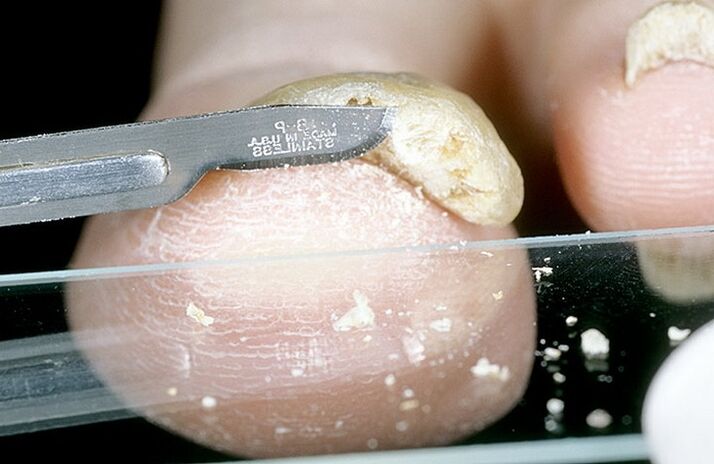
To clarify the type and strain of pathogenic microorganisms, fungal samples were inoculated in a nutrient medium and created optimal conditions for their growth. After 10-14 days, by the type and shape of the colony, it is possible not only to identify the pathogen, but also to establish its response to the most common drugs.
The fastest and most accurate method is considered to be PCR (polymerase chain reaction). The biological material is treated with special enzymes that allow the fungus to be studied at the DNA level. As a result, the type of pathogen is identified and its precise description is given.
On the basis of the above procedures, the patient is finally diagnosed and an optimal plan is developed to eliminate the fungus as soon as possible.

Treatment
Dermatologists promise a good prognosis for onychomycosis only if patients strictly follow all their prescriptions and recommendations.
In most cases, complex treatment is carried out, which includes the use of topical ointments, creams and varnishes, oral antifungal agents and alternative treatments.
Keratolytics are used to soften and remove the affected nail. You can also get rid of the manifestations of a fungal infection with the help of special varnishes.
In cases where nail fungus has progressed to a severe stage or is at risk of developing into a secondary infection, possibly due to pathogenic bacteria entering the affected area, oral antifungal antibiotics will be prescribed. single.
You can speed up the healing process by using traditional home healers. According to patients, the most effective are the following procedures:
- bath with baking soda or decoction of medicinal herbs,
- apple cider vinegar lotion,
- compressed with celandine tincture,
- ointments based on propolis and other bee products.
To destroy pathogenic microorganisms, before applying antifungal drugs, you can treat nails with essential oils of cinnamon, clove, fir, oregano or lemon.
Many dermatological centers recommend laser removal of fungus from nails. This procedure allows you to quickly and painlessly remove the affected nail plate, performed on an outpatient basis.
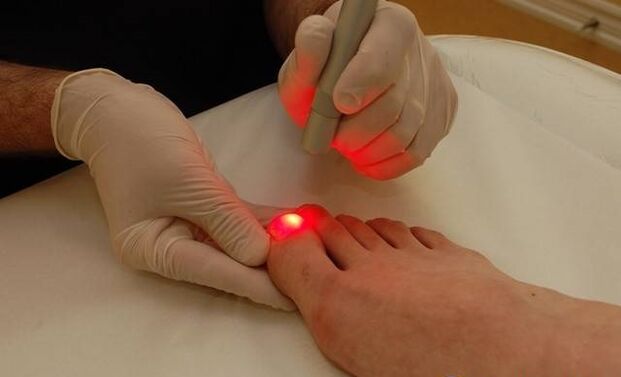
How can you get a fungal infection?
Toenail fungus is a contagious fungal disease that is easily passed from person to person through household contact.
Usually it happens like this:
- when walking barefoot in public places with high humidity - saunas, spas, gyms, swimming pools, on the beach,
- when trying on or wearing someone else's shoes or knitwear,
- through bedding, towels, face towels, brushes, and other personal items.
When visiting a nail salon, it is necessary to pay attention to the sterilization of tools, since many cases of fungal infections occur due to the fault of unscrupulous employees of the beauty salon.
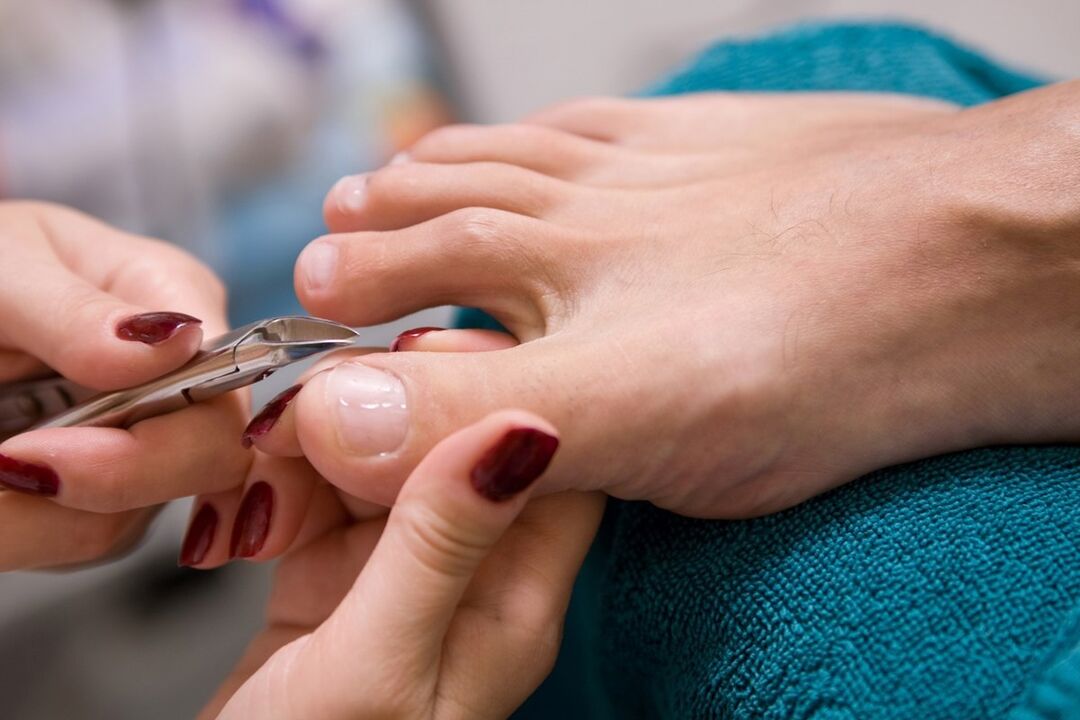
Prevent
To prevent pathogenic fungi from multiplying even if they are on your nails or skin, you need to take care of your health and boost your immune system by following these recommendations:
- To reject bad habits.
- Stay in shape.
- Spend more time outdoors.
- Balance your diet by including foods that contain nutrients and vitamins.
- Observe personal hygiene.
- Timely cure of all chronic diseases.
- Wear quality shoes and knitwear that don't restrict or move your feet.
- Shoes used in the pool, gym or on the beach should be regularly treated with a disinfectant.
After noticing puzzling changes in your skin or nails, you should make an appointment with a dermatologist to start treatment as soon as possible and get rid of the fungus as soon as possible.


























